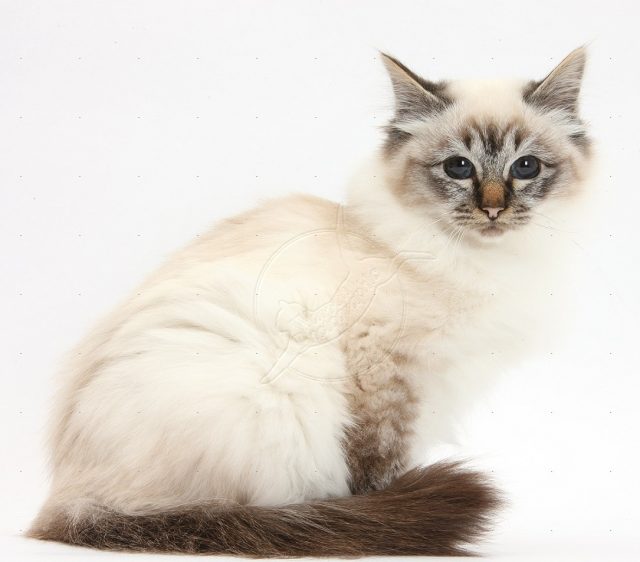Type the name of the breed you're looking for below
[wpdreams_ajaxsearchlite] Don't see the breed your're looking for? Click here and let us know!
Breed Characteristics
1 paw - breed exhibits the least amount of this characteristic
5 paws - breed exhibits most amount of this characteristic
Birman
| Origin And History | There is no clear record of the breed's origin. They are most often claimed to have originated as the companions of temple priests in Northern Burma in the Mount of Lugh. There are many stories extant of how the cats first came to France, including pairs of cats being given as a reward for helping defend a temple, or being smuggled out of Burma by a Vanderbilt. Another pair of Birmans (or a pregnant female called Poupée de Maldapour) were said to have been stolen and later imported to France by Thadde Haddisch. The first traces of historical Birmans go back to a Mme Leotardi[6] in the city of Nice in France. Birmans were almost wiped out as a breed during World War II. Only two cats were alive in Europe at the end of the war, a pair named Orloff and Xenia de Kaabaa, both belonging to Baudoin-Crevoisier. The foundation of the breed in postwar France were offspring of this pair. They had to be heavily outcrossed with long-hair breeds such as Persian and Siamese to rebuild the Birman breed. By the early 1950s, pure Birman litters were once again being produced. The restored breed was recognized in Britain in 1965 and by the CFA in 1966. The first Birman cats were seal point. The blue point colour was introduced in 1959 using blue Persian lines. New colours were later added by English breeders including chocolate, red, and lynx (tabby) points. Birmans have also been used in the development of new breeds, notably including the Ragdoll. |
| Personality | Birmans are affectionate, gentle, and faithful companions with an air of dignity that seems to invite adoration by their human companions. As former temple cats, Birmans seem to have become accustomed to adoration. They are very intelligent and affectionate, according to fanciers, and very people-oriented. They will generally greet visitors with curiosity rather than fear. Because of their gentle temperaments, Birmans are easy to handle, care for, and show, and they make ideal pets for anyone who wants quiet companions that will offer love and affection in return for just a little well-deserved worship. |
Physical Attributes
| Appearance | Like all color point cats, Birman kittens are born all white and develop their color as they mature. They come in a rainbow of colors, including seal, blue, lilac, chocolate, red, cream, and tortie. All these colors can be either the traditional solid pattern or the dramatic lynx pattern. A special and unique feature of the Birman is their beautiful white paws. Ideally, the Birman is a medium-sized cat, strongly built cat with striking eyes, round face, and a Roman-shaped nose which all result in a pleasing expression. The Birman fur is a single-length (no undercoat) soft, silky, and lush coat; they have a longer ruff around the neck and a fluffy tail. Their coats do not mat, and they require a minimum amount of grooming. |
| Health | The Birman is a hearty, healthy cat that does not reach full maturity until approximately 3 years of age. The most severe threat is feline hypertrophic cardiomyopathy (HCM), the most common heart disease seen in cats. In Birman cats, it is thought to be inherited as an autosomal dominant trait. HCM is a progressive disease and can result in heart failure, paralysis of the hind legs due to clot embolization originating in the heart, and sudden death. |



